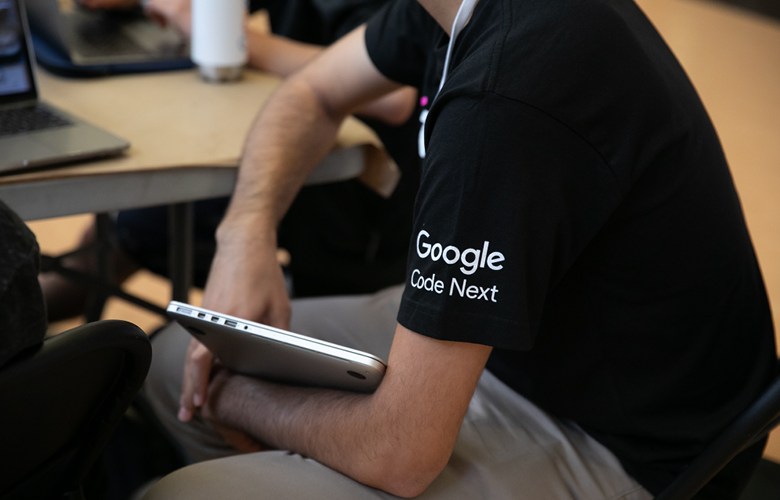
Code with Google’s Code Next is a free computer science education program that meets Black, Latinx, and Native American high school students in their communities and provides the skills and support they need for long, rewarding careers in computer science-related fields. With our current Google-run labs functioning as R&D spaces, we aim to generate the best in culturally responsive and reflective computer science education for high schoolers. We simultaneously partner with organizations such as EDC to collaborate on evaluations that Code Next and others can use to inform future program design, as well as to better understand the efficacy of our educational programs. Our recent efforts to keep kids engaged have provided learnings that are likely to resonate with many educators. Recently, we met with Francisco “Paco” Nieto, one of our curriculum managers, and discussed the COVID-19 pandemic and the ways it forced the Code Next team and student engineers to adjust to new realities in learning.
At the start of the pandemic, Nieto thought that Code Next and its community would come to a screeching halt. “I was sure no high schooler would want to sign up to engage in more video conferencing after spending all day or all week staring at a screen,” Nieto remembers.
Instead, the Code Next team found that as we pivoted to virtual classrooms, the students still came. While there were aspects of in-person learning that everyone missed, the learning and participation continued.
As a result of our reflections with Nieto and other Code Next curriculum managers and mentors, we came away with five core strategies that helped keep our students engaged—strategies that you might consider employing:
1. Create communal identity: Try to find mentors and teachers that look like the students they are working with, or come from similar backgrounds. Hiring a diverse team of coaches and volunteers helps “students see themselves represented in an industry that has not done a good job at reflecting society,” says Nieto.
2. Focus on metacognitive skills and reflection: Sometimes it can take a life-altering event, such as a global pandemic, to really see what is working well. Schedule time for reflection and retrospection. Encourage students to acknowledge their own vulnerabilities and challenges, and model this for them in the way you teach and interact.
3. Let go of the deficit mindset: Do away with elements that tend to be barriers for growth, creativity, and agency. Focus on building and practicing a “yes, and” mindset.
4. Have students choose their own adventure: If possible, provide students with lesson plans including instructional goals and outcome expectations, but empower students to take charge of their own learning. Encourage them to make meaningful connections to prior knowledge and personal experiences. Code Next helps to provide the time and space to experiment and build personalized learning artifacts. As a result, students feel a deep responsibility to their learning, which encourages and inspires. Try to replicate this style of learning and personal responsibility in the more traditional classroom.
5. Build social capital: Networks of relationships can be defined as an individual’s social capital, which can be applied to any industry.1 In a practical sense, social capital allows an individual to leverage relationships for resources (e.g., information about internships and jobs or support through a difficult college course). Encourage your students to build social capital with their peers, instructors, and mentors, so that they can successfully navigate their education and career pathways beyond the current learning environment.
At the end of 2020, the team officially launched a new program called Code Next Connect, which brings the core of the Code Next learning experience and community to an online platform, opening it up to more students across the country.
Leah Drapkin, product support manager, is currently working with Code Next as an editorial manager. She has over a decade of experience and identifies as an observer, a listener, and a “sponge” for knowledge. | |
Shameeka Emanuel, diversity STEM strategist, is tasked with reconsidering the relationship between industry and education to expand capacity in computing education. During her nearly 20-year career, her work experiences have included component design engineer as well as program and product management. | |
Francisco Nieto is currently managing the Code Next curriculum. He has been creating educational experiences for over 20 years. His focus is on building capacity for transformative STEM programs and teachers. |
1Saw, G. K. (2020). Leveraging social capital to broaden participation in STEM. Policy Insights from the Behavioral and Brain Sciences, 7(1), 35–43. https://doi.org/10.1177/2372732219895997



Comments
Add new comment